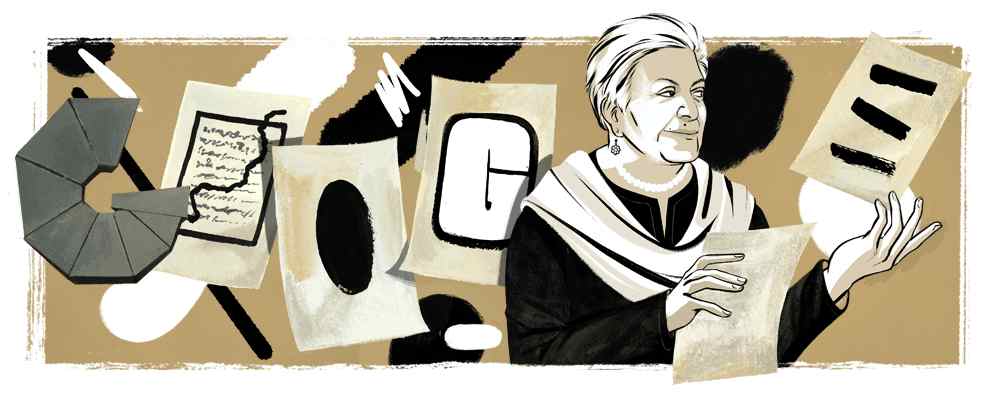Google Doodle: Google is celebrating the 86th birth anniversary of Indian American artist and printmaker Zarina Hashmi. The dark-hued doodle by Tara Anand shows the zest of her artworks with minimalist abstract and geometric shapes to explore concepts of home, displacement, borders, and memory. She was also one of the most prominent artists associated with the Minimalist Movement.
Source: Google Doodle
Who is Zarina Hashmi?
On this day in 1937, Hashmi was born in the little Indian town of Aligarh. Before India was divided in 1947, she and her four siblings led a happy life. Millions of people were forced to evacuate due to this awful occurrence, and Zarina’s family was compelled to go to Karachi in the newly founded Pakistan.
At age 21, Hashmi wed a young diplomat and began her travelling journey with Bangkok, Paris, and Japan, where she was exposed to printmaking and modernist and abstract art trends.
In 1977, Hashmi relocated to New York City, where she developed into a fervent supporter of black and female artists. She quickly became a member of the Heresies Collective, a feminist journal that investigated the nexus between politics, art, and social justice.
She then became a professor at the New York Feminist Art Institute, which offered female artists equal educational chances. She collaborated on the exhibition’s co-curation in 1980 at A.I.R. Gallery, titled “Dialectics of Isolation: An Exhibition of Third World Women Artists of the United States.” This ground-breaking exhibition featured work from several artists and gave female artists of colour a platform.
Hashmi, a proponent of minimalism art, rose to prominence for her appealing intaglio and woodcut prints that blend semi-abstract representations of the homes and cities she had lived in. Inscriptions in her native Urdu and geometric designs influenced by Islamic art were frequently found in her creations.
Zarina Hashmi: Awards & Recognitions
Zarina was one of four artists or artistic collectives who represented India in its debut exhibit at the 2011 Venice Biennale. The first retrospective of her work was held at the Hammer Museum in Los Angeles in 2012. The exhibition, Zarina: Paper Like Skin, moved to the Art Institute of Chicago and the Solomon R. Guggenheim Museum. Zarina served as the Asian/Pacific/American Institute’s Artist-in-Residence at NYU during the 2017–18 academic year. Zarina: Dark Roads, a solo show, and Directions to My House, a pamphlet, served as the residency’s capstone projects.
|
Year |
Awards |
|
1969 |
President’s Award for Printmaking, India |
|
1974 |
Japan Foundation Fellowship, Tokyo |
|
1984 |
Printmaking Workshop Fellowship, New York |
|
1985 |
New York Foundation for the Arts Fellowship, New York |
|
1989 |
Grand Prize, International Biennial of Prints, Bhopal, India |
|
1990 |
Adolph and Esther Gottlieb Foundation grant, New York Foundation for the Arts Fellowship |
|
1991 |
Residency, Women’s Studio Workshop, Rosendale, New York |
|
1994 |
Residency, Art-Omi, Omi, New York |
|
2002 |
Residency, Williams College, Williamstown, Massachusetts |
|
2006 |
Residency, Montalvo Arts Center, Saratoga, California |
|
2007 |
Residency, University of Richmond, Richmond, Virginia |
The idea of home as a flexible, abstract realm that transcends materiality or location was addressed in Zarina’s art. Her artwork frequently contains motifs that allude to concepts like mobility, diaspora, and exile. For instance, in her woodblock print Paper Like Skin, a thin black line that divides the page from the bottom right corner to the top left corner meanders upward across a white background. In its meandering and angular divide of the page, the line has a geographical character that indicates a border between two locations or possibly a topographical map of an unfinished voyage.
























































